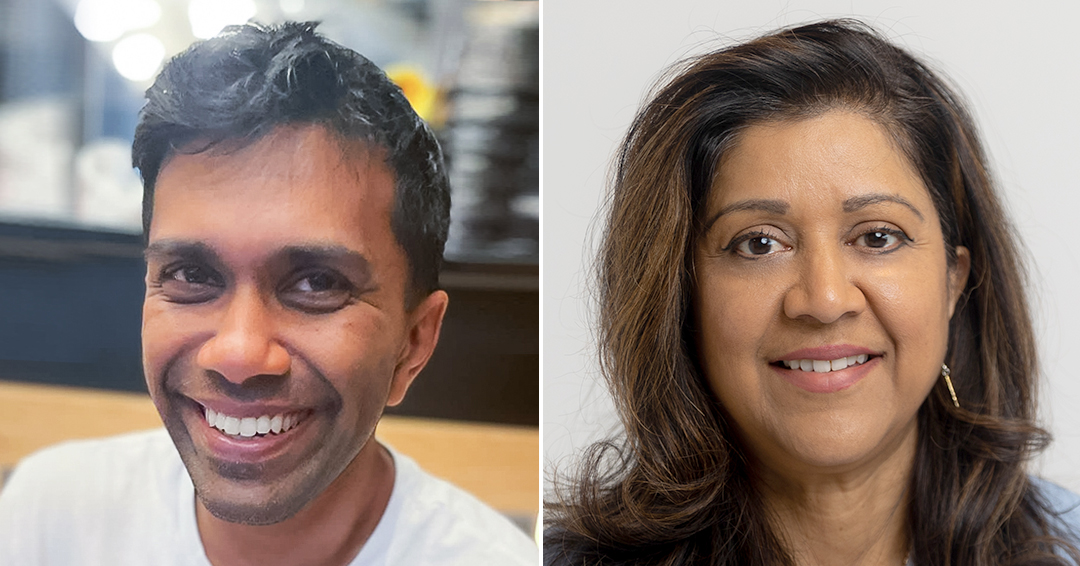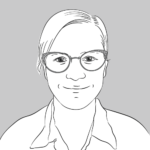
A little over a year ago, the Faculty of Medicine and Health Sciences’ Office of Social Accountability and Community Engagement (SACE) welcomed a new Director, Baijayanta Mukhopadhyay, MDCM, and Associate Director, Seeta Ramdass. Both have vast experience in community health and engagement and have been busy taking the pulse of both the Faculty community and the larger community we serve. We caught up with the pair recently to hear about how it’s all been going and their plans for the coming year.
Looking back at your first year with SACE, what stands out?
Baijayanta Mukhopadhyay (BM) It’s been a year of getting to know the team, getting to know the context, finding our feet as an office. There’s lots of fantastic social accountability and community engagement work happening organically across the Faculty and we don’t want to centralize or control it. But a little bit more communication and coordination is important so that we are collaborating where there is energy and synergy already present. And just learning more about each other, being curious about the work happening across the Faculty.
Another thing we’ve been doing is engaging with patient partners and community groups who we serve as a Faculty in our training, research and clinical service missions. Making sure that that relationship is a two-way street is something that is very central to both Seeta’s and my values, and we are really trying to make sure that becomes part and parcel of the way the Faculty does its work.
Seeta Ramdass (SR): Since we’ve joined SACE, members of the Faculty, including oncology residents, nursing and surgery faculty, have reached out to us to learn more about the underserved underrepresented communities and expressed interest in meeting with them directly. So we’ve been able to set up opportunities to meet and engage directly with very marginalized and diverse community groups creating a constructive and informative exchange between community patients and our health care trainees.
What is SACE’s role in the Faculty to facilitate these connections and making our work more inclusive?
BM: Equity work and social accountability community engagement is not one office’s job. It is everyone’s job. There is a tendency – a very human tendency – to say “Oh well, there’s somebody taking care of that.” But that’s not our job. We’re here to support you. We’re here to talk through practices, procedures and policies that you might want to help build within your unit. But we’re not here to do the work for you. It’s everyone’s responsibility to engage in this work. Our role at SACE is to help people along that journey. But the journey is yours, not ours.
SR: And to help people on their journey, we have to understand collectively as a Faculty that we have to assess and modify our steps in response to a perpetually evolving community landscape. What would have been great two years ago does not apply anymore. There’s a huge amount of learning and adapting that is constantly going on.
How is the Faculty doing in terms of embracing these principles?
BM: There’s been great progress in particular around the teaching and education mission across the different Schools and that’s really important because we’re training the next generation of health professionals that community members are going to be seeing. Now we’re at the point where we can ask “What’s the next step?” We’re beginning to do the basics, so now, we can start to aim a little bit higher.
What do you think should be the next steps?
BM: I really hope we’re ready to move on in terms of what communities want their health professionals to do and also in the way we do research. There’s a huge range of research that’s done across the Faculty, and some people might feel that these questions don’t really apply to the sort of research they do. But I argue that they do – that the communities and the patients we serve have a role to play from the very conception of the research question, all the way to the dissemination of results. Throughout the entire research process there should be a relationship of accountability, engagement and equity. We’re trying to build that understanding and awareness within the Faculty’s very broad and phenomenal research mission.
SR: Here is where the McGill Faculty of Medicine and Health Sciences can take a huge global leadership role in promoting equity, diversity, socioculturally safe and inclusive practices in healthcare, and in conducting community-led research from outset to outcome, ensuring that all data on specifically vulnerable communities are managed by those communities in a safe, culturally-responsive context.
Back in April, you held your first Pan-Faculty Day of Reflection. Can you tell us a little bit about that?
BM: We invited colleagues who were already engaged in social accountability, community engagement and equity work at the Faculty to come together for discussion. It was very productive because certain themes came up across the board and we were able to start to see where some of the structural issues are. And then, we did a similar event in June with students who are also engaged in this work. It was very revealing to hear how students experience this work across the Faculty.
What did you hear from participants?
BM: A big frustration within the room was the difficulty of partnering with communities on very tangible issues when it comes to human resources processes and finance processes. Things like transferring funds to community groups or members who might be part of research processes but are not formally part of the university community. Or hiring people who might not meet traditional academic criteria.
We’re beginning to have some productive conversations about ways we can shake that cage a little bit. Obviously it’s very important to have rigorous processes around finances and human resources, but we have to make sure they are also inclusive. Because if we are encouraging people within the Faculty to do more community-engaged research and inviting community members to teach our trainees about lived experience, we also have to make sure that they’re compensated adequately for their time and their effort.
What are SACE’s priorities for the coming year and years?
BM: We have four main priorities for the coming years. Number one is rooting out any residue of thinking about race as a biological category. Number two is making sure that we understand the inequities within the communities we serve, build community relationships and make sure that the communities lead. Third is the research and teaching agendas – ‘What are we training people for?’ ‘What we are generating knowledge for?’ And lastly, I think one of the things that we struggle with at the Faculty is defining who are the communities we serve. Definition matters. It helps us both channel our attention rather than it being ad hoc and chaotic.
SR: Our big global priority is for the Faculty to support clinicians to incorporate countermeasures to health disparities into their clinical decision-making processes and to be culturally safe and responsive in their research, their care and their educational initiatives and practices.
SACE’s Community Health Forum: Black Experiences in Healthcare was held on January 17. Stay tuned for our story about the all-day community-led event in an upcoming edition of Health e-News.

